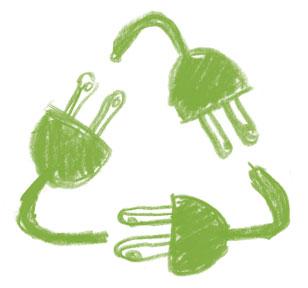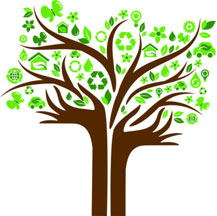Collect
Employees who have been deputed to collect the e-waste are provided with protective gear. The equipment is segregated at the source and appropriate measures are taken for transporting the collected waste.
Transport
The transporting vehicle will display Form-8 (Transport Emergency Information Card) and Form-11 (Hazardous Waste Carrying Identification Slip). The arrangement of a closed container vehicle will be made for collection. We will ensure a smooth loading & unloading process and issue Form-13 (Transport Manifest) in duplicates to the waste generator.
Segregate
Based on the size of the equipment, and available components, segregation is done again in the factory premises.
Dismantle
For dismantling, we have designed a table in-house, on top of which a dust protector and extractor are installed. Filtered through a HEPA Filter, the collected dust will be automatically stored in an attached container, after which it will be disposed off through the TSDF. CRTs, CPUs, Hard Disk SMPS, Printers, Fax machines, ACs, Washing Machines and Lab equipments are dismantled separately.
Recycle
Every human born will need to consume 3.6 million pounds of Minerals, Metals & Fuels in a lifetime. So it is the need of the hour to conserve the natural resources by recycling. Our recycling efficiency is to recover up to 98% of recyclable products and dispose off the balance hazardous waste through TSDF.
To obtain the highest possible result, labour intensive methods are used to completely disassemble and separate items into core materials and components. This allows us to supply our recycling partners downstream with a pure product, free from contamination.
E Cycle Recovery will NOT:
- Place your equipment in landfill
- Refurbish, sell or give away your items
- Ship to where it may be processed under poor health and safety conditions.
 :: Plastic :: Plastic
All plastics are sent to a recycler who uses the raw material to manufacture items such as vineyard stakes, fence posts and plastic sleepers.
:: Metal
Scrap metals are sent to a recycler. They are placed through a shredder before magnetic systems separate the ferrous from the non ferrous materials. The resulting product is used in the manufacture of new steel and other metal products.
:: Glass
Cathode Ray Tube (CRT) glass, used in computer monitors and televisions, are a major issue because they incorporate many hazardous materials. Lead is the most prevalent toxic material in CRT glass; it is poisonous to the nervous system and can remain in the human body for years. Tubes in a large CRT monitor can contain up to 4 kg of lead as well as other toxic metals such as phosphor and barium.5 To obtain the highest environmental outcome it is necessary to send the glass to CRT Recycling Australia located in South Australia where it will be processed to specification before being used in the manufacture of new CRT monitors and televisions.
:: Mercury
Mercury is commonly found within many e-waste items. Highly toxic, even in small amounts, it has been known to cause damage to the lungs, kidneys, brain, nervous and reproductive systems. Given the opportunity to leach into water and soil, it is able to be ingested by aquatic creatures and then through the food chain into our diet. 5 To avoid these consequences, we remove mercury containing devices such as tubes and lamps and forward these to an EPA approved mercury recycling plant. Here they use technology that captures the mercury for use in dental amalgams, separates the glass for use as glass wool in home insulation and takes out the phosphor powder for use in fertilizer products.
 :: Wood :: Wood
Commonly found in older televisions, stereos and speakers, wood is sent to recycling companies who either shred it for use as mulch or use innovative technology to mix it with other waste materials for use as an alternative fuel source.
:: Printed Circuit Boards
Circuit boards are sent to ISO 14001 (Environmental Management) accredited companies. Here they can be processed in specialized smelters to recover non renewable resources such as copper, gold, silver, palladium and other precious metals.
:: Hard Drives
Hard drives, in whole and shredded form, are sent to an aluminum foundry for processing into aluminum ingots. The majority of aluminum ingots are used within the automotive industry.
:: Toner and Ink Cartridges
Toner and Ink cartridges are packaged in a sealed box and returned to industry recyclers. Some will be remanufactured into new cartridges, and the remainder that can't be remanufactured will be separated into plastic and metal and returned to the recycle chain as raw materials.
:: Batteries
Nickel Cadmium, Nickel Metal Hydride & Lithium Ion batteries are sent, under our recycling partners special export permit, to SNAM (Société Nouvelle D'affinage Des Métaux) a French based company who meets the European Union's strict environmental standards. The material is hulled to remove excess plastic, and then the metals placed in special smelter pots to recover cobalt, cadmium, nickel and steel for reuse in a range of areas such as battery production and stainless steel fabrication.
:: CD ROMs, Sound & Memory cards
For copyright and security reasons these products are shredded before being sent to plastic and metal recyclers.
|